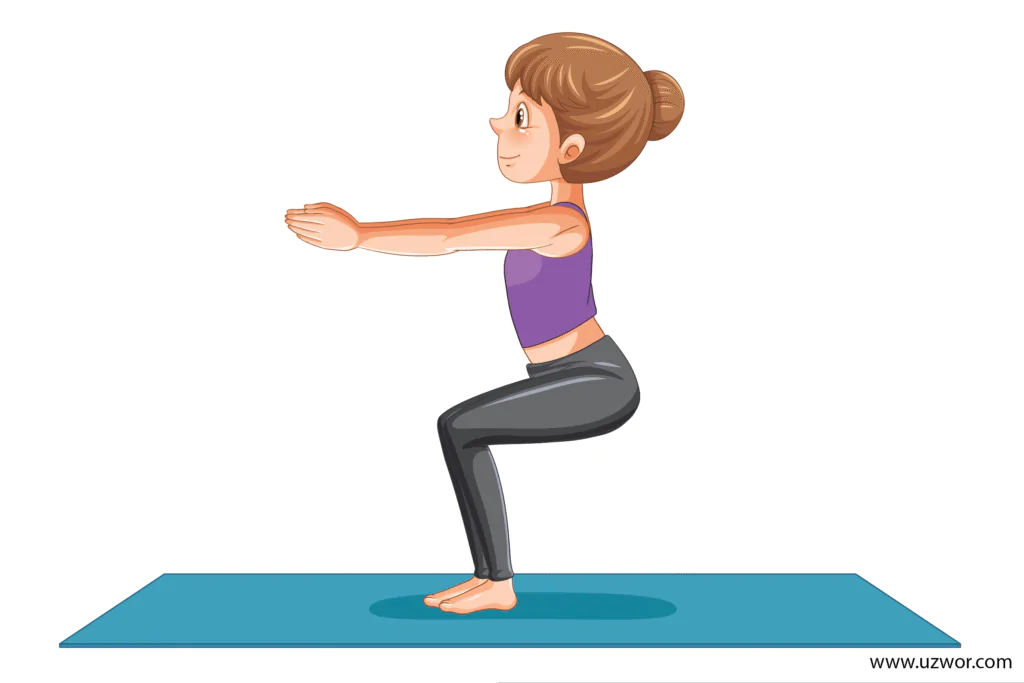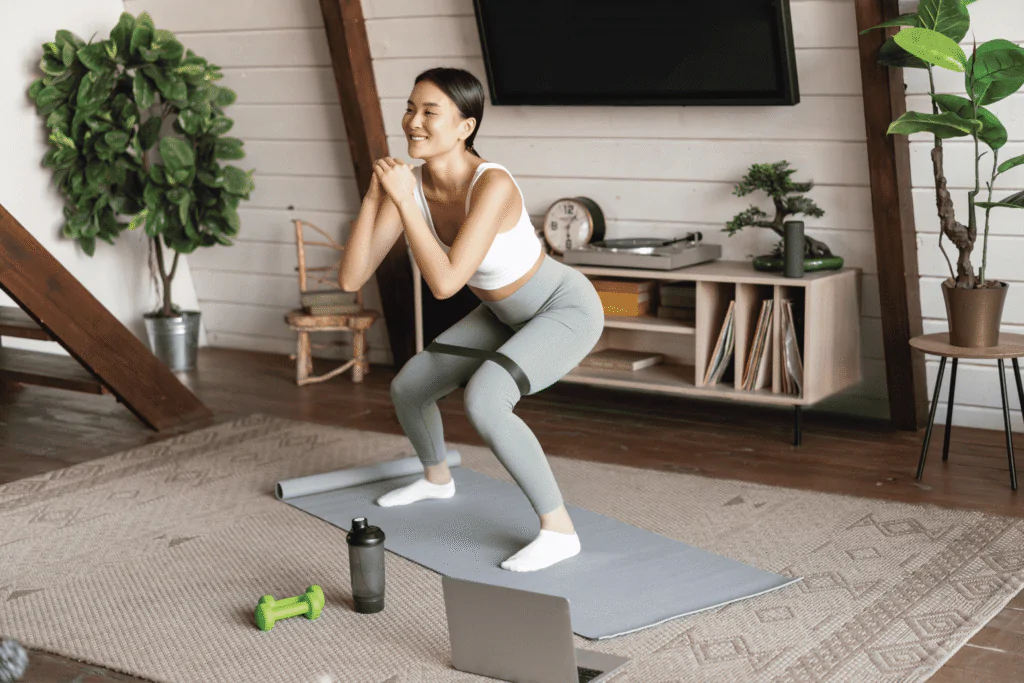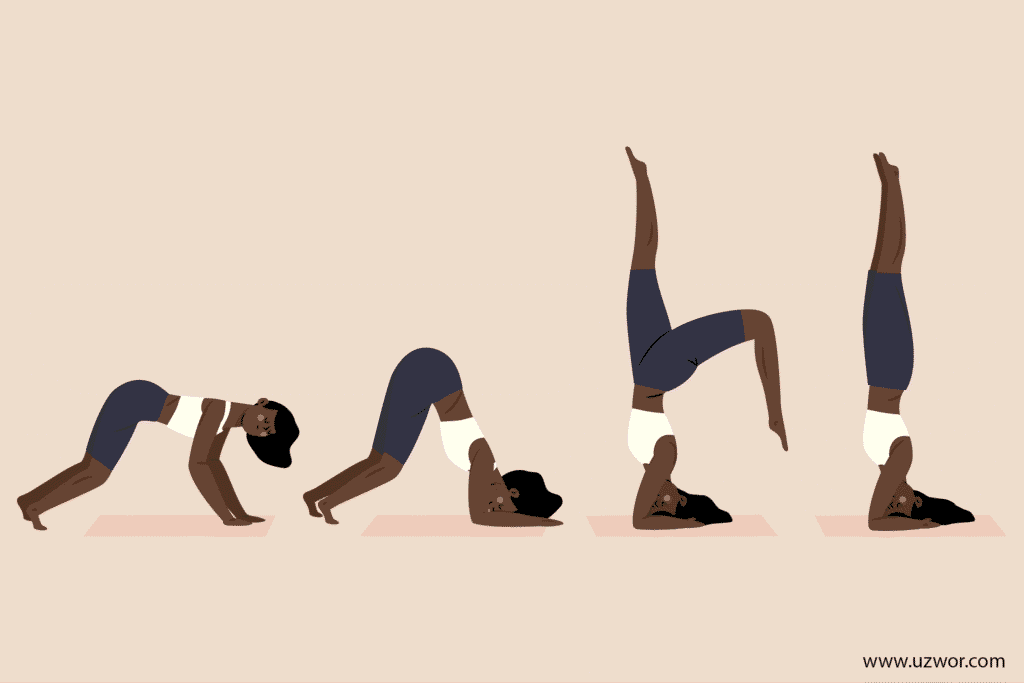When we think of meditation, we usually imagine sitting cross-legged on the floor. But meditation can be practised in standing positions too, and Utkatasana, or Chair Pose, is one of the best examples. Even though the name sounds like you’re sitting on a chair, the pose is actually a standing squat-like position that builds strength, balance, and focus. It’s often practised in yoga sequences, but it’s also an excellent meditation posture if you want to combine stillness with stamina.
History of Utkatasana
The Sanskrit word “Utkatasana” comes from utkata, meaning “fierce,” “intense,” or “powerful,” and asana, which means “pose.” Traditionally, it was practised to develop discipline and endurance, training both the body and the mind. Yogis believed that holding Utkatasana helped ignite the inner fire (Agni) in the body, building determination and mental clarity. Today, it’s a staple in modern yoga classes, often included in Sun Salutation B.
Health Benefits of Utkatasana
Utkatasana isn’t just about standing still — it engages almost every part of your body. Here’s what it does for you:
- Strengthens the lower body: Works your thighs, calves, and glutes, making them stronger over time.
- Builds core stability: Your abdominal muscles stay engaged to keep balance.
- Improves posture: Holding the pose teaches your spine to stay long and aligned.
- Stimulates circulation: Boosts blood flow and energises the body.
- Enhances focus: Since it requires concentration, it doubles as a guided meditation position that helps calm mental chatter.
- Supports weight management: Holding this pose burns calories and strengthens muscles.
- Energises the body: Helps awaken your system when you’re feeling sluggish.

(Source: Bajaj Finserv – Health Benefits of Utkatasana)
Chair Pose Precautions
While Utkatasana is great for many people, it’s not for everyone. Keep these things in mind:
- Avoid this pose if you have knee injuries or severe arthritis.
- People with lower back pain should keep the lower spine neutral and avoid leaning too far forward.
- If you suffer from headaches, insomnia, or low blood pressure, practice with caution.
- Pregnant women should avoid deep squatting in this pose.
Preparatory and Follow-Up Poses
Think of Utkatasana as part of a journey, not a stand-alone move. These poses prepare your body and help cool it down afterwards:
Preparatory Poses:
- Mountain Pose (Tadasana): Teaches you balance and grounding.
- Sun Salutation (Surya Namaskar): Warms up your body before holding the chair pose.
- Downward-Facing Dog (Adho Mukha Svanasana): Stretches the back and hamstrings to prep for the squat.
Follow-Up Poses:
- Eagle Pose (Garudasana): Enhances balance and stretches legs further.
- Standing Forward Bend (Uttanasana): Releases tension in the spine and hamstrings after Utkatasana.
How to Do Utkatasana

Here’s a simple step-by-step guide:
- Start in Mountain Pose (standing tall, feet together, arms at sides).
- Inhale, and raise your arms overhead, palms facing each other or joined together.
- Exhale, and bend your knees, as if you’re about to sit in an invisible chair.
- Keep your thighs as parallel to the floor as possible (without straining).
- Draw your tailbone down to avoid overarched the lower back.
- Hold the pose, breathing steadily, for 30 seconds to 1 minute.
- To release, straighten your knees while lowering your arms.
Alignment Clues
Little tweaks make a big difference here:
- Keep your weight in your heels, not your toes.
- Knees should point forward, not inward.
- Lift your chest up while keeping the shoulders relaxed.
- Engage your core to support your lower back.
Modifications and Variations of Utkatasana
Not everyone can drop into the full pose right away, so here are some variations:
- Wall Chair Pose: Do it with your back supported against a wall.
- Half Chair Pose: Don’t bend too deeply; keep the knees only slightly bent.
- Twisted Chair Pose (Parivrtta Utkatasana): Bring palms together and twist your torso to one side for a deeper challenge.
- Arms Variation: Keep your hands at the heart centre if lifting overhead feels difficult.

Practical Implementation of Utkatasana
You don’t need a yoga mat to practice Utkatasana. You can do it anywhere — in your living room, at the office, or even outdoors. It’s great as:
- A quick morning energiser.
- A grounding pause during stressful workdays.
- A meditation position to train both mind and body.
Anatomy of Utkatasana
What’s happening in your body during this pose?
- Legs: Quadriceps, hamstrings, and calves are fired up.
- Glutes: Strongly engaged to hold the squat.
- Core: Abdominal muscles stabilise the spine.
- Arms & Shoulders: Reaching upward strengthens the deltoids and keeps the chest open.
- Spine: Kept long and aligned to prevent slouching.

